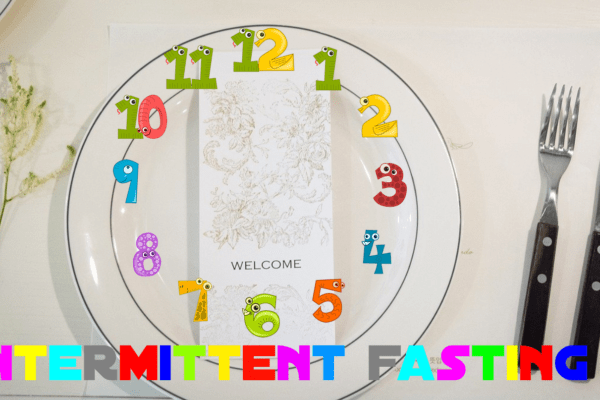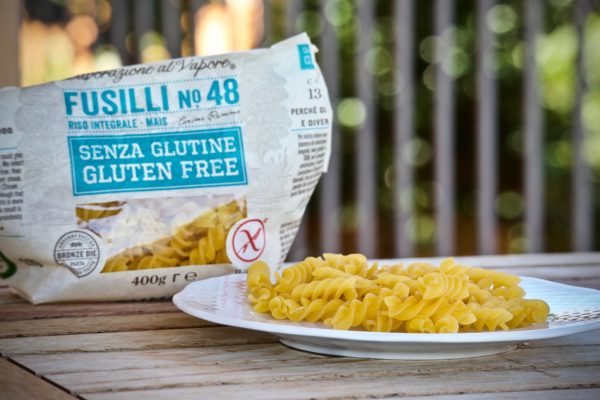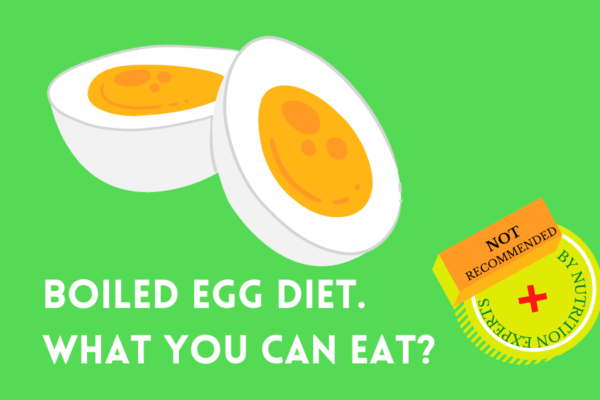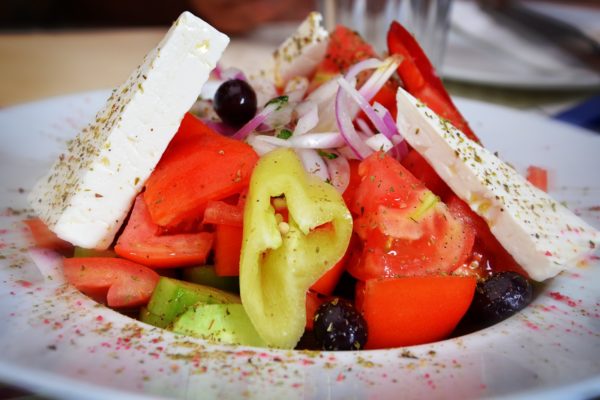Although there are many different diets for weight loss, the most effective ones are not about limiting calories as much as possible but controlling carbohydrates. Such diets help not only to lose weight quickly but also to maintain a stable weight in the future.
The diet for weight loss should be based on lean meats, vegetables, and other foods with fiber, while sweets, bread, pasta, and excessively fatty foods should be excluded. Below you will find practical nutritional advice and descriptions of the 7 best diets for fast weight loss – which one is better?

Menu and food
What is more important for weight loss – a diet for weight loss or effective fat burning exercises? The answer of the scientific community is unequivocal – to lose weight, first of all, you need to switch to a healthy diet. For example, studies show that with the same caloric intake and the same level of physical activity, excess weight is lost faster in those who consume carbohydrates with a low glycemic index.
Proper nutrition for weight loss is always the rejection of simple carbohydrates, as well as the exclusion of excessively high-calorie and fatty foods. In addition, monitoring your daily calorie intake, protein, and fiber in your diet is critical for weight loss. This is what will help you not only quickly lose weight, but also maintain the result in the future.
Slimming diet
A weight loss diet is a diet that either creates a calorie deficit or restricts carbohydrates in the menu. In the first case, weight loss is achieved due to a lack of energy (the body uses the available fat reserves), in the second – due to changes in metabolic processes.
Note that fast weight loss diets often slow down the metabolic rate. It is necessary to lose weight gradually, otherwise not only the hormonal background of the body suffers, but also the skin on the abdomen. Ultimately, the longer you go on the diet, the more consistent the results.
In addition, although you can effectively lose weight only if you follow a diet and without playing sports, training will definitely speed up this process. Including, by accelerating metabolism and increasing blood circulation – which accelerates the burning of visceral fat.
How to lose weight correctly:
- moderate calorie reduction diet
- avoiding fast carbohydrates
- cardio for fat burning
How to lose 20 lb in a month?
If the calorie intake is cut in half (about 1000 cal per day), a person will lose about 0.22 lb of fat per day or 1.55 lb per week. In total, in a month of following the diet, he will lose about 6 lb. However, even such a “small” figure is easily capable of causing a number of negative changes in metabolism.
In other words, it is impossible to lose 20 lb per month solely by following a diet (even extremely strict). The maximum figure that can be achieved without harm to health and without loss of skin elasticity is about 1 lb of fat per week or 4 per month.
Slimming food
A sudden transition to a weight loss diet almost guarantees that in a week you will return to your regular menu. Making a diet plan for weight loss should begin by looking at what your current diet is based on. Harmful products should be excluded, and healthy ones should be left.
For example, to lose weight, you will have to give up sugar, sweets, starchy foods, as well as mayonnaise and other foods high in saturated fat. Recall that the problem with sweets lies not so much in the calories themselves, but in the fact that sugar dramatically increases the level of glucose in the blood.
Useful and unhealthy foods
Spend the first week on a weight loss diet carefully reviewing your menu. Study the calorie content of foods, the sugar and fat content in them. Try replacing mayonnaise with low-fat cheese sauce and sweet desserts with natural fruits.
At the same time, healthy foods are not necessarily expensive – you can effectively lose weight on lean meat, eggs, fish, low-fat cottage cheese, oatmeal, buckwheat and ordinary vegetables (beets, cucumbers, carrots, cabbage, zucchini, pumpkin). Top tip – cook at home and try to use as little fat as possible for frying.
Effective weight loss diets
Studies show that diets that limit the amount of carbohydrates are most effective. Such diets not only provide stable weight loss, but also help maintain the achieved result in the future.
Such diets normalize the production of insulin in the body, and also provide low levels of the hormones ghrelin and leptin. To recap, leptin is a key appetite hormone produced by fat cells. High leptin levels lead to intense hunger.
Attempting to lose weight by drastically limiting calories (or switching to mono diets – rice, kefir, buckwheat) increases leptin, making it extremely difficult to follow the diet. Regular adherence to such diets can cause leptin resistance, and then insulin resistance and diabetes mellitus.


- Ketogenic (keto) diet
What is The Keto Diet? After a complete rejection of carbohydrates for about 2-3 days, the blood sugar level drops to minimum values, and the body switches to ketosis, starting to use the energy of fat deposits for the needs of the current metabolism.
Originally, the ketogenic diet was used to treat chronic conditions, but it is now one of the most popular for weight loss. The advantage of the keto diet is that it does not require counting calories and does not make you feel hungry – just completely eliminate carbohydrates.
The disadvantages include the monotony of the diet and the difficulty of choosing meals when eating out – the menus of most canteens and restaurants have an extremely limited number of carbohydrate-free options (for example, even cutlets can contain carbohydrates in the form of breading).
2. Carbohydrate-free diet
Basically, a carbohydrate-free diet is another name for the keto diet. For weight loss, it also implies a complete rejection of carbohydrate foods. Carbohydrate-free allows exclusively protein and fatty foods with a minimum amount of vegetables.
For example, fried eggs with bacon are recommended for breakfast, chicken breast with a minimum amount of vegetables for lunch, and meat or fish without garnish for dinner. As a snack and light snack – nuts or cheese.
3. Protein diet
Protein diet is also the name of a carbohydrate-free diet. The basis of the daily diet is meat and fish in all possible variations. The downside is the lack of control over the amount of saturated fat – in theory, this can lead to an increase in blood cholesterol levels.
In addition, the lack of fiber in the diet (it is found exclusively in plant foods) can cause difficulties with digestion.
4. Low-carb diet
A simplified variation of a carbohydrate-free diet. The total amount of carbohydrates in the daily diet should not exceed 50-60 grams – eggs and one fruit for breakfast, chicken and a small portion of buckwheat for lunch, meat and stewed vegetables for dinner.
In practice, following a low-carb diet is much easier because it does not impose severe restrictions on the food list – you just need to monitor the amount of carbohydrates.
5. Diet 16/8
Strictly speaking, the 16/8 diet is not a diet. At its core, it represents the method of intermittent fasting – the day is divided into 16 hours when food is prohibited and 8 hours when you can eat.

How Does Intermittent Fasting Work? Usually, this involves skipping a breakfast, and having big lunch at noon, a full second lunch, then an early dinner (no later than 8 pm).
There are no restrictions on the calorie content of the diet or on the carbohydrate content. Losing weight is achieved by fasting for the remaining 16 hours.

6. Gluten free diet
Gluten is a key component of wheat protein that can cause food allergies in some people. Avoiding gluten foods and switching to a gluten-free diet means completely eliminating bread, pastries, pasta and a whole range of similar foods.
Ultimately, only meat, vegetables, fruits, and some cereals are allowed. A diet like this can help you lose weight by reducing calories and eating more responsibly.
A diet that implies a complete rejection of “modern” food and the transition to food known to man in the Paleolithic period. The Paleo Diet prohibits all types of bread and wheat, legumes (including lentils and soy), sugar, dairy products, and processed vegetable oils.

Also, sweets and semi-finished products are banned. Weight loss is achieved due to the fact that the permitted list of products is almost carbohydrate-free.
7 rules for fast weight loss
A number of factors are responsible for whether a particular person can quickly lose weight. First of all, genetic predisposition (the metabolism of women is prone to fat deposition and requires a special weight loss strategy), general level of physical activity, susceptibility to stress, as well as the quantity and quality of daily sleep. Recall that insomnia often leads to loss of energy and overeating.
1.Do not skip meals
Try to eat a small portion of the right food every few hours – otherwise, hungry breaks provoke overeating. If you want to lose weight, first of all avoid fast carbs and do not store chocolate or other sweets at work or at home.
2. Eat slower
Saturation from food comes in 15-20 minutes, while an average meal lasts about 3-7 minutes. Remember that if you eat too fast, you will no doubt risk eating more than you need. Drinking a glass of warm water before a meal is one of the easiest ways to fill up faster.
3. Eat mindfully
By consuming food while watching TV or reading Instagram feed, you risk eating much more than you need. All your attention should be focused on food and its quantity. Also, try not to speak while you eat, as you can easily lose control over how much food you put in your mouth during conversation.
4. Limit alcohol
Alcohol is extremely harmful to weight loss and provokes the growth of belly fat. Firstly, it stimulates appetite and reduces the sense of control over the incoming food, provoking overeating. Secondly, alcohol has a negative effect on the metabolism and on what kind of energy the body uses for life processes.
5. Avoid “economical” food packaging
Do not buy large packs of food – once you start the “economical” maxi-pack, you will not even notice how you finish it entirely. The presence of a product in large quantities always provokes that you eat more than necessary. Try to measure out exactly as much food as you need for saturation – this is the most important rule of losing weight.
6. Study the composition of the products
You’ve probably heard of the flavor enhancer monosodium glutamate, a substance that stimulates the taste buds of the tongue and makes food tastier. But few people know that glutamate can be found in spice mixes, not to mention the fact that fast food chains often use it to improve the taste of food, forcing them to eat more.
7. Keep a food diary
The ideal method for determining calories consumed per day is to calculate them mathematically. However, if you do not want to lead it, try to write down a list of foods you eat during the day. Finding a bar of chocolate on this list will make you really uncomfortable and give an extra motive to cut out unnecessary calories.
Effective diets for fast weight loss are based either on a moderate reduction in calories (no more than 15-20%), or on restricting carbohydrates in the diet. At the same time, losing weight by 20 lb per month is impossible without harm to health – the process of getting rid of excess weight should be smooth and gradual.
Which vegetable contains the most carbs?
| Great, this is the right answer. Lentils contain 20.3 grams of carbohydrates, versus 10.4 for onions and 7.2 for carrots. | |
| Oops, sorry that answer is wrong. Lentils contain 20.3 grams of carbohydrates, versus 10.4 for onions and 7.2 for carrots. | |
| Oops, sorry that answer is wrong. Lentils contain 20.3 grams of carbohydrates, versus 10.4 for onions and 7.2 for carrots. |



